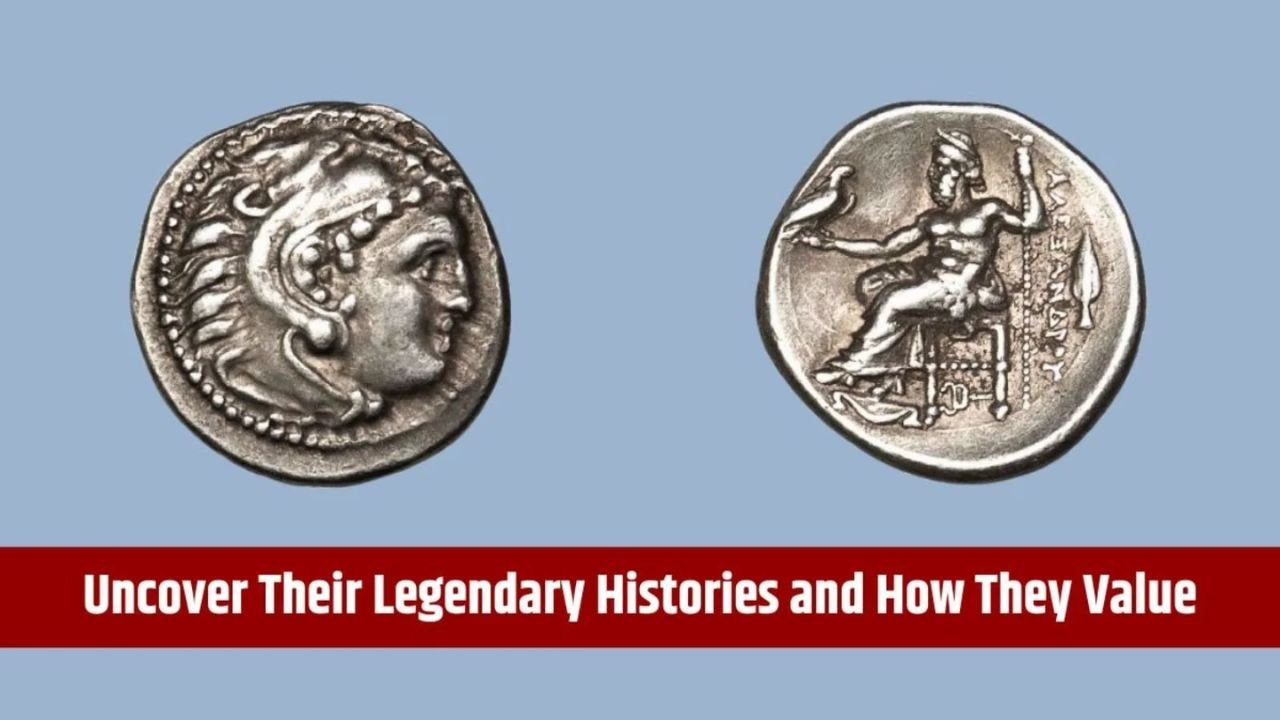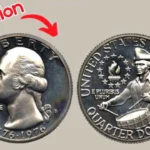In the captivating and sometimes enigmatic world of numismatics, few rumors have stirred as much intrigue as the supposed existence of a Lincoln Wheat Penny allegedly valued at a staggering $3 billion. For many collectors, the thought that an ordinary-looking copper coin, perhaps still circulating through everyday transactions, could hold such unfathomable worth is both exhilarating and perplexing. But as fascinating as this legend is, does it hold any weight in the realm of truth, or is it merely another internet-fueled fantasy?
The Lincoln Wheat Penny Valued at $4.1 Million, Still in Circulation
Lincoln Wheat Penny: A Symbol of American Numismatic Heritage
The Lincoln Wheat Penny is far from an ordinary coin. Introduced in 1909 to commemorate the 100th anniversary of Abraham Lincoln’s birth, it became the first U.S. coin to feature a real person—a bold and patriotic move at the time. Designed by Victor David Brenner, the obverse of the coin showcases Lincoln’s dignified profile, while the reverse features two stylized wheat stalks curving inward toward the center, giving the coin its now-famous moniker.
Minted primarily from 1909 until 1958, the Lincoln Wheat Penny is not just a collector’s item but a piece of American history. Most of these coins were struck from an alloy consisting of 95% copper and 5% tin and zinc, except for the wartime variant in 1943, which was made from steel coated with zinc. This steel version was produced due to the critical need for copper during World War II.
Among the vast mintage over the decades, certain years and mint marks stand out for their rarity and desirability. Coins like the 1909-S VDB (with the designer’s initials prominently displayed on the reverse), the elusive 1922 No D penny, and the extraordinarily rare 1943 copper penny have commanded incredible prices in the collector’s market—some even reaching into the millions of dollars. But even in this elite class of rare coins, none come remotely close to the rumored $3 billion valuation.
The Mysterious $3 Billion Lincoln Wheat Penny: Origin of the Myth
The idea that a Lincoln Wheat Penny could be worth $3 billion is, by most standards, outlandish. To date, no coin in history—American or otherwise—has ever approached such a figure in legitimate sales or auctions. The highest confirmed price paid for any U.S. coin remains the $18.9 million fetched by a 1933 Saint-Gaudens Double Eagle in a 2021 auction. That sum, astronomical in itself, still pales in comparison to the rumored value of the mythical Lincoln Wheat Penny.
So, how did such a story begin? The answer likely lies in a blend of misinterpretation, sensationalism, and viral misinformation. The internet, particularly social media platforms, is fertile ground for exaggeration. Posts showcasing rare coins with exaggerated price tags often gain attention rapidly, with users sharing the stories without verifying their authenticity. It’s plausible that the legend of the $3 billion Lincoln Wheat Penny grew from such a viral fabrication, possibly sparked by real valuable coins like the 1943 copper penny, of which only a handful are known to exist.
What starts as a kernel of truth can quickly become a whirlwind of misinformation. In the numismatic world, where rarity and value are closely tied to precise details such as mint marks and material composition, even the smallest factual error can snowball into a wildly inaccurate narrative.
Could a Valuable Lincoln Wheat Penny Still Be in Circulation?
While the claim of a $3 billion Lincoln Wheat Penny is firmly rooted in myth, the notion that highly valuable coins could still be found in everyday circulation is not as far-fetched. In fact, many collectors have stumbled upon significant finds in the most unexpected places—pocket change, old piggy banks, estate sales, or even inherited coin jars.
The Lincoln Wheat Penny, though officially discontinued in 1958 and replaced by the Lincoln Memorial reverse design, still pops up in circulation occasionally. While these circulated specimens are usually worth only a few cents, certain rare variations can command significantly higher values.
A well-preserved Lincoln Wheat Penny with a rare date, mint error, or low mintage could fetch anywhere from a few hundred to several thousand dollars. It’s the possibility of such discoveries that fuels the ongoing excitement among collectors and hobbyists alike.
Identifying a Rare and Valuable Lincoln Wheat Penny
For those inspired to start examining their change jars or visiting local coin shows, knowing what to look for is essential. Here are some of the most coveted and high-value Lincoln Wheat Penny varieties:
1909-S VDB
This coin is the undisputed icon of the Lincoln Wheat Penny series. With only 484,000 coins minted in San Francisco and the designer’s initials (V.D.B.) prominently displayed on the reverse, it is one of the most sought-after pennies. In excellent condition, it can fetch prices well into the five-figure range.
1914-D
Another rare gem in the series, the 1914-D was minted in Denver with a relatively low mintage of just over 1 million coins. It’s particularly scarce in higher grades and is often counterfeited, so authentication is critical.
1922 No D
Due to a die error at the Denver Mint, some 1922 Lincoln Wheat Pennies were produced without the customary “D” mintmark. These are rare and prized for their unintentional uniqueness.
1943 Copper Penny
Perhaps the most famous mint error in U.S. coinage, the 1943 copper penny was an accidental production anomaly. During that year, the U.S. Mint used steel instead of copper for pennies to conserve copper for the war effort. However, a few copper planchets were mistakenly struck. Only about 10–20 such coins are known to exist today, and they have sold for over $1 million at auction.
1955 Doubled Die Obverse
This variation features noticeable doubling in the inscriptions “LIBERTY” and “IN GOD WE TRUST” on the obverse. Though not as rare as the others, its striking visual error makes it a collector’s favorite, with prices ranging from hundreds to thousands depending on condition.
Collecting and Investing in Lincoln Wheat Pennies
Despite the fantastical claims surrounding some coins, collecting Lincoln Wheat Pennies remains a rewarding and educational hobby. It’s an entry point into the world of numismatics for many people, thanks to the coins’ rich history, wide availability, and the allure of finding a rare treasure.
Collectors often begin by assembling a complete set from 1909 to 1958, which is an achievable yet challenging task. The journey involves learning about different mint marks, die varieties, and grading standards. It also connects people to American history in a tangible way—each Lincoln Wheat Penny serves as a tiny time capsule of its era.
From an investment perspective, rare Lincoln Wheat Pennies have proven to be stable assets. Though not every coin will appreciate significantly, top-tier specimens—especially those with verified rarity and pristine condition—often see steady demand and price appreciation.
Separating Fact from Fiction in the Coin World
The idea of a Lincoln Wheat Penny being worth $3 billion might be enticing, but it’s vital for collectors and casual enthusiasts to approach such claims with a healthy dose of skepticism. Fact-checking, consulting reputable numismatic resources, and seeking authentication from professional grading services are essential steps when dealing with potentially valuable coins.
Legitimate rarities do exist, and stories of people finding coins worth thousands in pocket change are not entirely fictional. However, the jump from a few million to multiple billions is a leap that has never been substantiated in the world of coin collecting.
Conclusion: The Fascination Endures
While the rumor of a $3 billion Lincoln Wheat Penny is more fairy tale than fact, it nonetheless captures the enduring allure that coin collecting holds. It’s the hope that something ordinary might turn out to be extraordinary. Even though no Lincoln Wheat Penny has reached such a colossal valuation, the excitement lies in the hunt, the history, and the potential to uncover a hidden gem.
The next time you’re handed some change or come across a dusty jar of old coins, take a moment to look closer. That humble copper coin might not be worth billions—but if it happens to be a rare Lincoln Wheat Penny, you just might have a valuable piece of American history in your hand.
Some Important Link
| Telegram Group | Click Here |
| WhatsApp Group | Click Here |
| Home Page | Click Here |














